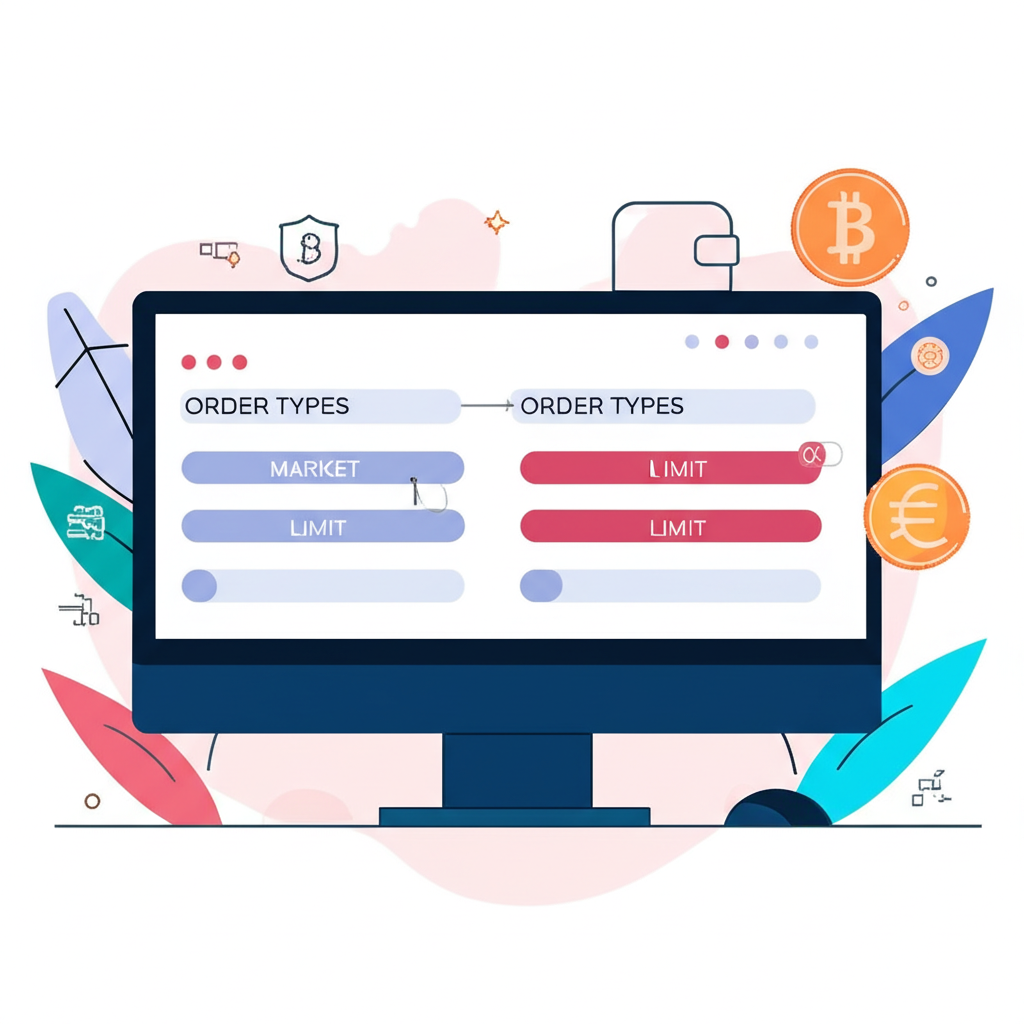Your Ultimate Guide to Trading BTC: From Basics to Bitcoin Futures

Introduction to Bitcoin Trading: What You Need to Know
Bitcoin trading revolves around predicting price shifts in BTC, whether against traditional currencies like the U.S. dollar or paired with other digital assets. Its growing popularity stems from the potential for substantial returns, fueled by dramatic market swings. Unlike conventional financial markets that follow set hours, cryptocurrency never sleeps—trading happens around the clock, every day of the year. This constant activity opens doors for global traders but also means staying alert to rapid changes. Newcomers should approach with realistic expectations: while profits are possible, so are steep losses, given Bitcoin’s unpredictable nature. Long-term success isn’t about luck—it comes from mastering market knowledge, crafting effective strategies, and above all, managing risk with discipline.

Why Trade Bitcoin? Opportunities and Challenges
What started as an experimental digital currency has evolved into a major financial asset, drawing interest from retail investors and institutions alike. Bitcoin’s sharp price movements create openings for significant gains in short timeframes. Traders can benefit not just when prices rise, but also when they fall—using tools that allow both long and short positions. Yet, this same volatility makes the market unforgiving. For those just starting out, the learning curve is steep. Understanding chart patterns, market sentiment, and the psychological pressure of real-time trading is essential. On top of that, the decentralized structure of crypto means prices can swing dramatically based on breaking news, regulatory updates, or shifts in investor confidence. Navigating this environment requires more than instinct—it demands research, preparation, and emotional control.

Getting Started: Essential Steps Before Your First BTC Trade
Taking your first step into Bitcoin trading shouldn’t be rushed. A thoughtful, structured approach increases your odds of avoiding costly missteps. Building a strong foundation—choosing the right platform, securing your account, and learning how trades work—is key to long-term participation in this fast-moving space.
Choosing the Right Bitcoin Exchange or Broker
Your trading journey begins with selecting a reliable platform. Not all exchanges are created equal. Look for features like strong security protocols, low and transparent fees, high liquidity to ensure fast trade execution, and an interface that’s easy to navigate. Centralized platforms such as Binance, Coinbase, and Kraken are widely used for their stability, customer support, and broad range of tools. They act as trusted intermediaries, simplifying the process of buying and selling BTC. Decentralized exchanges (DEXs), on the other hand, offer greater privacy and user control over funds but often come with slower transaction speeds and steeper learning curves. For beginners, sticking with a reputable centralized exchange is usually the smarter choice. To compare top platforms and their pros and cons, Investopedia offers a detailed review that can guide your decision.
Setting Up and Funding Your Trading Account
Once you’ve picked an exchange, the next step is creating and verifying your account. This typically involves registering with an email, setting a secure password, and completing identity verification—commonly known as KYC (Know Your Customer). This process helps prevent fraud and ensures compliance with financial regulations. You’ll likely need to upload a government-issued ID and proof of address. After verification, you can deposit funds. Most platforms support bank transfers, credit or debit card payments, and cryptocurrency deposits from external wallets. Keep in mind that some methods come with processing delays or higher fees, so choose the option that best suits your needs and timeline.
Understanding Trading Interfaces and Order Types
Before placing any trade, take time to explore the platform’s layout. Most trading dashboards display live price charts, order books showing current buy and sell interest, and tools for entering orders. Familiarity with different order types is crucial for executing trades effectively:
- Market Order: Fills your trade instantly at the best available price. It’s fast but may result in slippage during periods of high volatility.
- Limit Order: Lets you set a specific price for buying or selling. The trade only goes through if the market reaches your target, giving you more control.
- Stop-Loss Order: A vital safety net. It automatically sells your BTC if the price drops to a level you set, helping to limit losses.
- Take-Profit Order: Automatically closes your position when the price hits a predetermined profit target, locking in gains.
If the platform offers a demo or paper trading mode, use it. Practicing with virtual funds allows you to get comfortable with the interface and test strategies without risking real money.
Core Bitcoin Trading Strategies for Beginners
Every trader has a unique style, shaped by their goals, risk tolerance, and available time. Understanding the most common strategies helps you find the one that fits your situation best.
Spot Trading: Buying and Selling Bitcoin Directly
Spot trading is the simplest and most direct way to engage with Bitcoin. You buy BTC at the current market price and own it outright. The goal is straightforward: buy low, sell high. This method appeals to newcomers because it’s easy to understand and doesn’t involve complex financial instruments. Since you hold the actual asset, you can also transfer it to a personal wallet or use it for payments. While profits depend on market timing, spot trading avoids the added risks of leverage and derivatives.
Day Trading BTC: High Frequency, High Risk
Day trading involves opening and closing positions within a single day, aiming to profit from small price fluctuations. Traders using this strategy often spend hours analyzing charts, watching for patterns, and reacting quickly to market movements. It requires sharp focus, a solid grasp of technical indicators, and the ability to make decisions under pressure. Can someone realistically earn $100 a day trading crypto? Yes, but it’s not typical for beginners. Achieving consistent daily gains demands significant starting capital, advanced skills, and the mental stamina to handle frequent losses. Many new traders jump in without proper preparation and end up losing money due to poor timing or emotional decisions.
Swing Trading Bitcoin: Capturing Medium-Term Trends
Swing trading targets gains over a period of days or weeks by riding price swings within a larger trend. Unlike day trading, it doesn’t require constant screen time. Instead, swing traders wait for clear signals before entering a position, often using a mix of technical and fundamental analysis. For example, they might enter a trade after spotting a breakout from a consolidation pattern or a shift in market sentiment. This method suits those with full-time jobs or limited availability, offering a balance between active trading and patience.
HODLing: The Long-Term Investment Approach
“HODLing” originated from a typo but has become a core philosophy in the crypto community. It means buying Bitcoin and holding onto it for years, regardless of short-term price drops. This strategy is based on the belief that Bitcoin’s value will grow significantly over time due to scarcity, adoption, and macroeconomic factors. While not active trading, HODLing plays a critical role in many investors’ portfolios. Some even combine it with active trading—keeping a large portion long-term while using a smaller amount for short-term opportunities.
Advanced Bitcoin Trading Concepts and Instruments
Once you’re comfortable with the basics, more sophisticated tools can expand your options. These instruments offer greater flexibility but come with higher complexity and risk.
Trading Bitcoin Futures: Hedging and Speculation
Bitcoin futures are contracts that lock in a price for buying or selling BTC at a future date. You don’t own the actual coin—instead, you’re betting on where the price will be later. These contracts are used for two main purposes: speculation (profiting from price moves) and hedging (protecting existing investments from downside risk). Regulated platforms like the Chicago Mercantile Exchange (CME) offer Bitcoin futures, providing a more stable environment for institutional traders. Many crypto exchanges also offer similar products with leverage. As interest from firms like Tastytrade grows, futures are becoming a central part of the broader Bitcoin ecosystem—offering ways to profit in both rising and falling markets, though with serious risk if the market moves against you.
Leverage and Margin Trading: Amplifying Gains and Losses
Leverage allows you to control a larger position by borrowing funds from the exchange. For example, with 10x leverage, a $500 deposit can open a $5,000 trade. While this can multiply profits, it does the same to losses. A small adverse move can trigger a margin call, and if your equity falls too low, the exchange may liquidate your position automatically. This means losing your entire investment in seconds. Because of this, leveraged trading should only be attempted after gaining solid experience and implementing strict risk controls. It’s not a shortcut to wealth—it’s a high-stakes game that often ends badly for unprepared traders.
Essential Tools and Analysis for BTC Traders
Successful trading isn’t guesswork. It’s built on analysis, data, and the right tools to interpret market behavior.
Technical Analysis Basics: Charts, Indicators, and Patterns
Technical analysis focuses on historical price data to forecast future movements. Traders use charts and indicators to spot trends and potential entry or exit points. Key tools include:
- Candlestick Charts: Show the opening, closing, high, and low prices over a set period, revealing market sentiment.
- Volume: Reflects how much trading activity is happening. High volume during a price move adds credibility to the trend.
- Support and Resistance Levels: Price zones where buying or selling pressure tends to emerge, often acting as turning points.
- Moving Averages (MA): Smooth out price data to highlight the direction of the trend, helping identify momentum shifts.
- Relative Strength Index (RSI): Measures how fast prices are changing, signaling when an asset might be overbought or oversold.
Learning to read these signals takes time, but they form the backbone of most active trading strategies.
Fundamental Analysis: Understanding Market Drivers
While technical analysis looks at price charts, fundamental analysis digs into the real-world factors that influence Bitcoin’s value. Important considerations include:
- News and Events: Regulatory announcements, security breaches, or major company investments can move the market instantly.
- Network Activity: Metrics like active addresses, transaction volume, and wallet growth indicate adoption and network health.
- Macroeconomic Trends: Inflation, interest rate decisions, and global economic uncertainty often drive investors toward Bitcoin as a hedge.
Combining both technical and fundamental insights gives traders a more complete picture and improves decision-making.
Utilizing Trading Bots and Automated Strategies
Trading bots execute buy and sell orders automatically based on preset rules. They can monitor markets 24/7, react faster than humans, and eliminate emotional bias. Some bots follow simple strategies like buying when RSI is low, while others use complex algorithms. However, they’re not foolproof. Poorly configured bots can lead to big losses, especially during unexpected market events. They require regular monitoring, testing on historical data (backtesting), and adjustments as conditions change. For new traders, mastering manual trading first is essential before considering automation.
Mastering Risk Management in Bitcoin Trading
No strategy works without proper risk management. Even the most accurate predictions can fail, so protecting your capital is non-negotiable.
Setting Stop-Loss and Take-Profit Orders
These tools automate your risk and reward. A stop-loss order limits your downside by selling automatically if the price drops too far. A take-profit order locks in gains by exiting when your target is reached. The key is setting them before entering a trade and sticking to them. Emotional trading—holding onto a losing position hoping it will recover—often leads to bigger losses. Discipline keeps you on track.
Position Sizing and Capital Allocation
How much should you risk on a single trade? A common guideline is to never risk more than 1–2% of your total trading capital on one position. This way, even a string of losses won’t wipe out your account. Overexposure to a single trade is one of the fastest ways to lose everything in crypto’s volatile environment.
Diversification and Portfolio Management
While this guide focuses on Bitcoin, spreading your investments across different assets can reduce overall risk. Holding a mix of cryptocurrencies, or even including traditional assets like stocks or gold, can balance your portfolio. If one asset drops, others may offset the loss. But be careful not to over-diversify—too many positions can dilute returns and make tracking performance difficult.
Navigating the Legal and Regulatory Landscape
Cryptocurrency regulations are still evolving, and they vary widely from country to country. Staying compliant isn’t optional—it’s essential for protecting your funds and avoiding legal trouble.
Is Trading BTC Illegal? Understanding Regulations
In most major economies, including the United States, trading Bitcoin is legal. However, it’s subject to oversight by agencies like the SEC and CFTC. Exchanges must follow anti-money laundering (AML) and KYC rules. Some countries, like China, have banned crypto trading entirely, while others impose strict limits. Always check the rules in your region before getting started. Regulatory news can also impact market sentiment, so staying informed helps you anticipate potential price shifts.
Tax Implications of Bitcoin Trading
Gains from Bitcoin trading are typically treated as taxable income. In the U.S., the IRS classifies Bitcoin as property, meaning capital gains taxes apply when you sell or trade it. The tax rate depends on how long you held the asset—short-term gains (less than a year) are taxed higher than long-term ones. Keeping detailed records of every transaction—purchase price, sale price, date, and fees—is critical for accurate tax reporting. Tools like crypto tax software can help organize your data. For official guidance, the IRS website offers FAQs on virtual currency. (Note: This is not tax advice. Always consult a qualified professional for personal guidance.)
Common Mistakes to Avoid When Trading Bitcoin
Even experienced traders make errors, but beginners often repeat the same avoidable ones. Recognizing these pitfalls can save you time, money, and stress.
Emotional Trading and FOMO/FUD
Fear of Missing Out (FOMO) and Fear, Uncertainty, and Doubt (FUD) drive many poor decisions. When prices surge, FOMO can push traders to buy at the peak. When the market crashes, FUD leads to panic selling at the bottom. Both behaviors go against sound strategy. The solution is simple but hard: create a trading plan and follow it, regardless of headlines or social media hype.
Over-Leveraging and Ignoring Risk Management
The promise of big returns with small capital is tempting, but overusing leverage is a common path to losing everything. Many new traders skip basic protections like stop-loss orders or proper position sizing. Remember: preserving capital is more important than chasing quick wins. If you’re wiped out, you can’t trade tomorrow.
Lack of Research and Due Diligence
Jumping into a trade based on a social media post or rumor is gambling, not investing. Always research the asset, understand the market context, and assess the risks. Relying on others’ opinions without verification leads to poor outcomes. Take ownership of your decisions by doing your own analysis—technical, fundamental, or both.
Conclusion: Your Journey to Becoming a Proficient BTC Trader
Trading Bitcoin can be both exciting and profitable, but it’s not a get-rich-quick scheme. It’s a skill that develops over time through learning, practice, and discipline. Start by understanding the basics—how markets work, how to use an exchange, and what strategies are available. As you gain confidence, you can explore advanced tools like futures and leverage, but always with caution. Risk management should be your top priority. Avoid emotional decisions, keep records, and stay updated on regulations. Begin with small amounts, learn from every trade, and refine your approach. With persistence and a clear mindset, you can grow into a capable and informed Bitcoin trader.
How much is $100 Bitcoin worth right now?
The value of $100 in Bitcoin fluctuates constantly due to its high volatility. To find out its exact worth at any given moment, you would need to check a live Bitcoin price tracker on a cryptocurrency exchange or a financial data website. For example, you can use CoinMarketCap to see the real-time price.
Can I make $100 a day trading crypto?
Yes, it is possible to make $100 a day trading crypto, but it’s not guaranteed and comes with significant risk. It typically requires a substantial trading capital, advanced trading skills, a disciplined strategy, and an understanding of market dynamics. Many beginners overestimate their potential and underestimate the risks involved in day trading.
How much is $1000 Bitcoin in US dollars today?
Similar to the $100 question, the US dollar value of $1000 worth of Bitcoin changes by the second. You would need to consult a live price feed from a reputable crypto exchange or financial news outlet for the most current conversion.
Is trading BTC illegal in the United States?
No, trading BTC is not illegal in the United States. However, it is regulated. The US government and various agencies, such as the SEC and CFTC, oversee cryptocurrency activities, and exchanges must comply with regulations like KYC (Know Your Customer) and AML (Anti-Money Laundering). Profits from trading are also subject to capital gains tax.
What are the key steps to start trading BTC for beginners?
The key steps for beginners include:
- Researching and choosing a reputable cryptocurrency exchange.
- Setting up and verifying your trading account (KYC).
- Funding your account with fiat currency or crypto.
- Understanding basic trading interfaces and order types (market, limit, stop-loss).
- Starting with a small amount and practicing risk management.
Which cryptocurrency exchanges are recommended for trading Bitcoin safely online?
Several reputable exchanges are known for their security and user-friendliness. Popular choices include:
- Coinbase: Known for its ease of use, great for beginners.
- Binance: Offers a wide range of cryptocurrencies and advanced trading features.
- Kraken: Respected for its robust security and diverse offerings.
- Gemini: Highly regulated, focusing on security and compliance.
Always ensure the exchange is regulated in your jurisdiction and has strong security protocols.
What are the most common mistakes new traders make when trading Bitcoin?
New traders often fall prey to:
- Emotional trading: Letting FOMO (Fear Of Missing Out) or FUD (Fear, Uncertainty, Doubt) drive decisions.
- Over-leveraging: Using too much borrowed capital, leading to amplified losses.
- Ignoring risk management: Not setting stop-loss orders or proper position sizes.
- Lack of research: Trading based on hype rather than fundamental or technical analysis.
- Impatience: Expecting quick riches and panicking during market dips.
How can I learn crypto trading for free and effectively?
You can learn crypto trading for free through various resources:
- Online courses and tutorials: Many exchanges offer free educational content.
- YouTube channels: Numerous creators provide trading insights and tutorials.
- Reputable financial websites: Sites like Investopedia, CoinDesk, and CoinTelegraph offer extensive guides.
- Demo accounts: Practice trading with virtual money on platforms that offer them.
- Books and blogs: Explore free e-books or articles on trading strategies.
Start with the basics, focus on risk management, and gradually build your knowledge.
What are Bitcoin futures and how do they differ from spot trading?
Bitcoin futures are derivative contracts that allow traders to speculate on Bitcoin’s future price without owning the actual BTC. The buyer agrees to purchase, and the seller agrees to sell, Bitcoin at a specific price on a future date. This differs from spot trading, where you directly buy and sell the actual Bitcoin for immediate delivery, taking ownership of the asset. Futures offer leverage and the ability to profit from both rising and falling markets, but they also carry higher risks due to their complex nature and potential for liquidation.
What are the tax implications of trading Bitcoin in different countries?
Tax implications for Bitcoin trading vary significantly by country. In the US, Bitcoin is generally treated as property, and capital gains from trading are taxable. Other countries may classify it differently (e.g., as a currency, property, or even a commodity) or have different tax thresholds and rates. It’s crucial to consult with a local tax advisor or refer to your country’s official tax authority guidelines (e.g., the UK’s HMRC guidance on cryptoassets) to understand your specific obligations. Always keep detailed records of your trades for accurate reporting.

留言